When it comes to flat or low-slope roofs, the choice of roofing membrane is very important.
Severe winters, freeze-thaw cycles, high heat, and heavy rainfall place tremendous pressure on roofing systems.
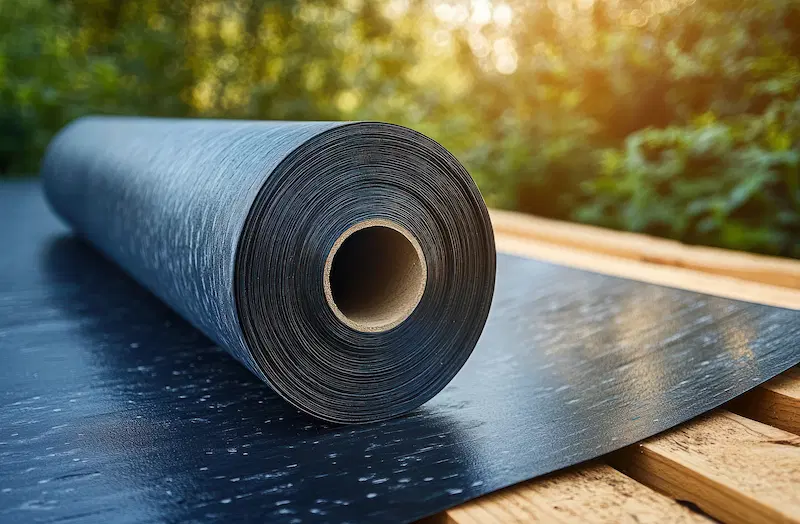
Whether you’re planning to replace an old roof or install on a new home, this guide will help you decide between the top three flat roof membranes in Canada: Elastomeric membranes, TPO (Thermoplastic Polyolefin), and EPDM (Ethylene Propylene Diene Monomer).
All three types of roofs have pros and cons. We will break them down for you to help you find the right fit for your home.
When you are ready to look at prices to get the best deal, fill out the short online form on this page to receive FREE and NO-OBLIGATION roofing quotes.
Membrane Choice Matters for Flat Roofs in Canada
Sloped roofs shed water easily but flat roofs require membranes that are durable, watertight, and flexible, particularly since Canada’s climate is as diverse as its population.
Flat roofs are common in commercial buildings, multi-residential units, modern homes, and urban infill developments.
Your roofing system needs to:
- Stay watertight during snowmelt and rainstorms
- Resist cracking during deep freezes
- Handle UV and heat in the summer
- Last 20+ years with minimal maintenance
Understanding your roofing options is essential to make sure your roof protects your home and everything and everyone inside it.
The type of roof membrane you choose will impact energy efficiency, durability, maintenance needs, and cost.
The Top 3 Flat Roof Membranes in Canada
We’re focusing on the most widely used, time-tested, and Canada-approved membranes:
- Elastomeric Membranes (Modified Bitumen)
- TPO (Thermoplastic Polyolefin)
- EPDM (Ethylene Propylene Diene Monomer)
Each has distinct installation methods, performance levels, price points, and suitability for various climates and buildings.Lorem ipsum dolor sit amet, consectetur adipiscing elit. Ut elit tellus, luctus nec ullamcorper mattis, pulvinar dapibus leo.
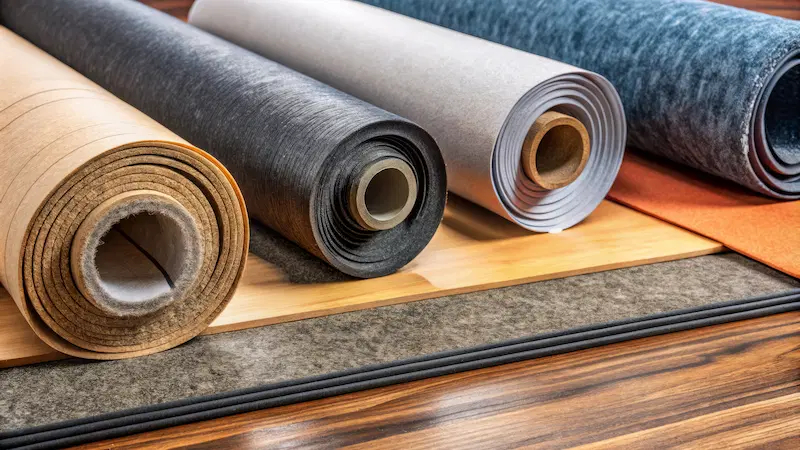
1. Elastomeric Membrane (SBS Modified Bitumen)
Elastomeric or SBS membranes are made from modified bitumen, a type of asphalt mixed with rubber for greater flexibility. They are installed in two layers—a base sheet and a top sheet—and the applied using torch-on heat or additives.
- Highly durable with lifespans of 25–30 years
- Resilient in extreme cold; won’t crack in -30°C weather
- Great waterproofing thanks to its multi-ply system
- Self-sealing properties under heat can prevent minor leaks
- Excellent resistance to foot traffic and mechanical damage
The Cons of Elastomeric Membrane:
- More expensive due to multi-step installation
- Torch-on method poses a fire risk and requires skilled pros
- This heavyweight system may not suit lightweight roof structures
This type of roof is best used for commercial roofs in cold regions, multi-residential buildings, and high-traffic rooftops such as terraces or those with HVAC systems.
$10 – $15 per sq. foot
The cost can be higher in areas that need extra fireproofing or has limited access.
2. TPO (Thermoplastic Polyolefin)
TPO is a single-ply white roofing membrane made from thermoplastic compounds. It’s lightweight, energy-efficient, and heat-welded at the seams using a hot air gun for superior waterproofing.
- Highly reflective surface reduces summer cooling bills
- Heat-welded seams are strong and watertight
- Mold, UV, and chemical resistant
- Lightweight and fast to install
- Compatible with green/eco-roofs or solar panel installations
- May become brittle in sub-zero temperatures if not properly formulated
- Heat welding requires skilled installers and specialized equipment
- Newer to Canada, so long-term performance is less documented than EPDM
This type of roof is best for modern commercial or residential properties located in milder regions in Canada.
Average Cost with Installation:
$8 – $12 per sq. ft.
The cost can be higher if enhanced insulation or accessories are needed.
3. EPDM (Ethylene Propylene Diene Monomer)
EPDM is a rubber-based membrane available in large rolls, which reduces the number of seams. It can be adhered with glue or mechanically fastened and has been used in Canadian flat roofs for over 40 years.
Pros:
- Proven cold-weather performance: Won’t crack or shrink in freezing temperature
- Long lifespan: Maximum of 30+ years with proper maintenance
- Lower cost
- Easy and cost-effective to repair
- Compatible with ballasted or green roof systems
Cons:
- Its black surface absorbs heat can increase cooling costs
- Seams are glued and can fail over time
- Shrinkage occurs over time, causing damage to flashings
This type of roof is ideal for homeowners looking for budget-friendly roof replacement options. It can be installed in cold-weather conditions.
$7 – $11 per sq. ft.
Costs vary based on size, insulation, and access requirements.
Regional Considerations: Which Membrane Works Best Where?
- Cold winters, humid summers, and large snow loads.
- Elastomeric membranes are popular for their cold resistance and durability.
- EPDM performs well in both residential and commercial settings.
- Wet climate, mild winters, and coastal air.
- TPO’s resistance to mold and UV rays makes it ideal.
- EPDM is also commonly used for eco-conscious builds.
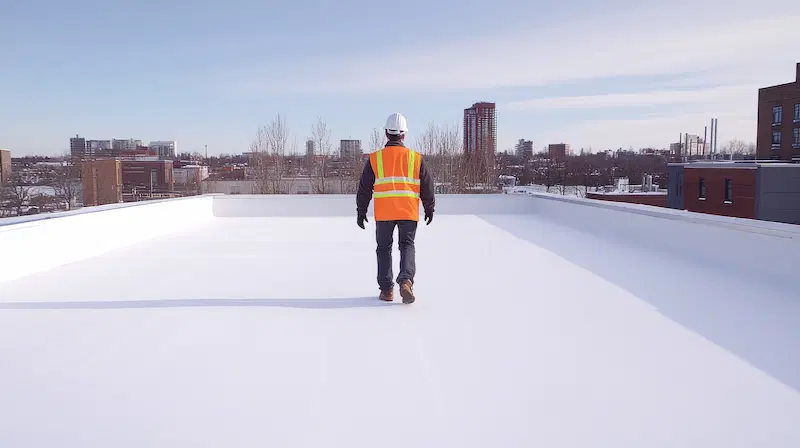
- Harsh freeze-thaw cycles and wide temperature swings.
- EPDM and Elastomeric are safest bets for long-term performance.
- TPO may be vulnerable unless high-quality membranes are used.
- Frequent storms and coastal winds.
- Elastomeric membranes provide a secure seal in exposed areas
- TPO needs careful anchoring and detailing to avoid seam failures.
Comparison of Installation Methods
| Membrane | Installation Type | Speed | Labour Intensity | Equipment Required |
Elastomeric | Torch-on Cold Adhesive | Slow | High | Torch Rollers |
TPO | Heat-welded seams | Fast | Medium | Hot air welder |
EPDM | Adhesive or Mechanical | Medium | Low | Standard tools |
*All systems benefit from professional installation, especially in climates with freeze-thaw cycles.
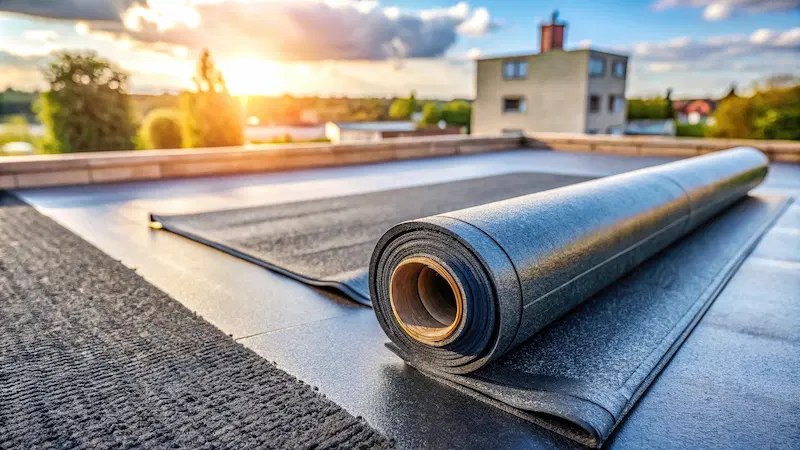
Maintenance & Repair Considerations
Elastomeric: Minimal maintenance required. Small cracks may self-heal in warm sun. Annual inspections recommended.
TPO: Seams should be inspected regularly. Can be patched or re-welded if damaged.
EPDM: Easy to repair with patches and adhesives. Regular sealing of seams can extend lifespan.
Regardless which membrane you choose, flat roofs require annual inspections to remove debris, clear drains, and check seams or flashing for maximum performance and longevity.
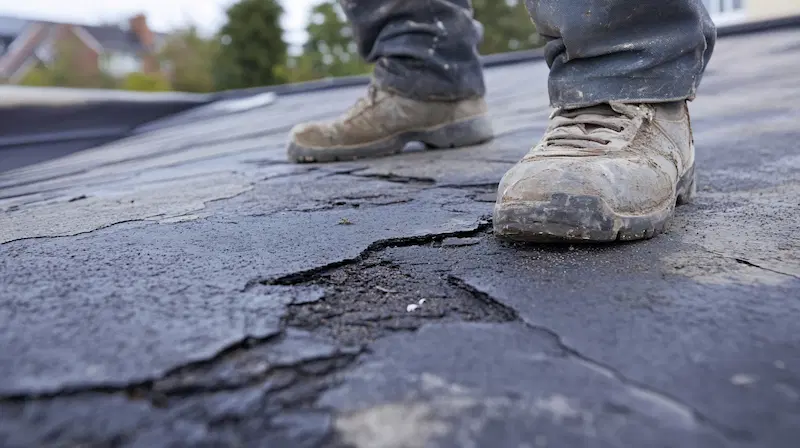
Sustainability & Energy Efficiency
Flat roof membranes aren’t just about weather protection—they also play a role in your home’s environmental impact and energy use.
Some materials provide superior insulation or reflect heat, reducing cooling costs. Others are designed for longevity, reducing waste over time.
Here’s how each membrane type compares in terms of sustainability and energy efficiency:
TPO:
- White surface reflects sunlight (reduces cooling load)
- Fully recyclable
- Often used in green-certified buildings
EPDM:
- Durable and long-lasting
- Can be reused or recycled in some areas
- Available in white (cool roof) versions
Elastomeric:
- Not recyclable, but extremely durable
- Darker surfaces can be offset with insulation to maintain energy efficiency
While each membrane has its strengths, the right choice depends on your priorities.
Whether it’s reducing energy bills, extending roof life, or supporting greener building practices, you can compare the 3 types of flat roofs to find the best one for your needs.
No matter which option you choose, matching the right material with proper insulation and expert installation will ensure your flat roof performs efficiently and sustainably for years to come.
Flat Roof Replacement Cost Breakdown by Roof Size in 2025
One of the biggest questions homeowners ask is: “How much will my flat roof replacement cost?” The answer depends heavily on the size of your roof, the type of membrane, and your location.
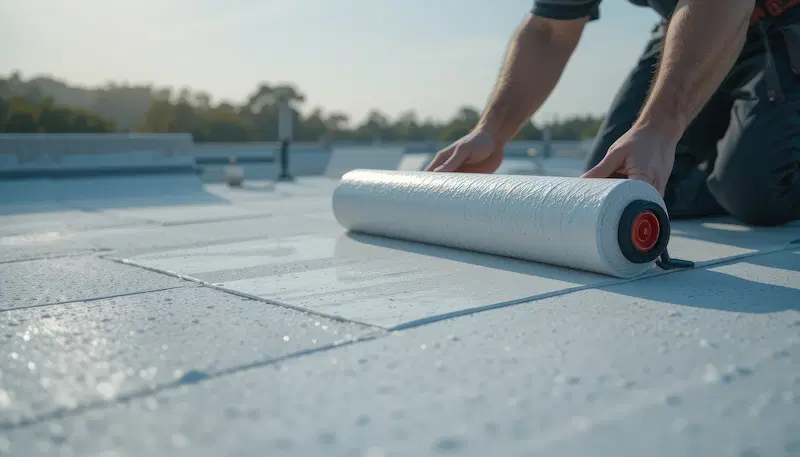
Here’s a detailed cost breakdown by square footage to help you budget more accurately.
| Roof Size (in sq. ft.) | EDPM Average Cost | TPO Average Cost | Elastomeric Average Cost |
| 1000 | $7,000 – $11,000 | $8,000 – $12,000 | $10,000 – $15,000 |
| 2500 | $17,500 – $27,000 | $20,000 – $30,000 | $25,000 – $37,000 |
| 5000 | $35,000 – $55,000 | $40,000 – $60,000 | $50,000 – $75,000 |
Please note that the figures provided cover materials and labor (installation costs). However, they do not include insulation, tear-off, or permits required, which may increase the cost from $2 – $5 per square foot.
Small Flat Roof (500–800 sq. ft.)
A small flat roof is typical for homes, small bungalows, or porches and garages. Below is the average cost of small flat roofs.
| Type of Membrane | Average Cost with Installation |
| EPDM Rubber | $4,000 – $9,000 |
| TPO (White Membrane) | $5,000 – $10,500 |
| Elastomeric | $6,000 – $12,000 |
Small flat roofs are recommended for budget-conscious homeowners and those who want easy maintenance and proper sloping for drainage purposes.
Medium Flat Roof (900–1,500 sq. ft.)
A medium flat room is popular for mid-size bungalows, duplexes, or small commercial properties.
| Type of Membrane | Average Price Range with Installation |
| EPDM Rubber | $7,500 – $14,000 |
| TPO | $9,000 – $16,000 |
| Elastomeric | $10,000 – $18,500 |
This type of roof may need additional insulation or ventilation upgrades. As the size of the roof increases, drainage becomes more critical.
Large Flat Roof (1,600–2,500 sq. ft. or more)
Large flat roofs are recommended for multi-unit residential properties, rowhouses, or small apartment blocks.
| Type of Membrane | Estimated Price Range |
| EPDM Rubber | 412,500 – $25,000 |
| TPO (White Membrane) | $14,500 – $30,000 |
| Elastomeric | $16,000 – $35,000 |
This type of roof installation may require staging, scaffolding, and other additional safety measures.
This size of torch-on jobs need professional crews and multiple set-ups. You could qualify for insulation rebates from your province to reduce your expenses.
Factors That Affect the Final Price of Roof Installation
Besides the size of the roof size and membrane type, your price may vary due to:
- Access issues (tight urban spaces vs. wide-open lots)
- Existing roof condition (tear-off or overlay)
- Insulation type and thickness
- Number of penetrations (skylights, vents, HVAC units)
- Location:
- GTA and Vancouver: Higher labour and permit costs
- Smaller towns and provinces: Typically lower prices.
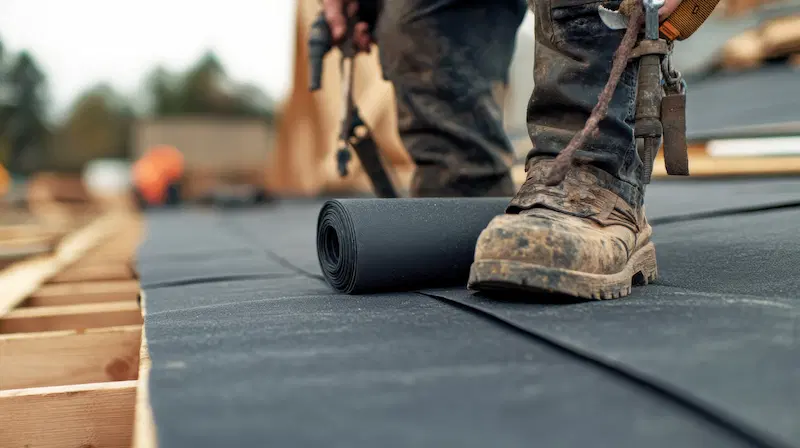
Understanding these cost factors will help you avoid surprises and make smarter choices.
By comparing free quotes from our platform, you can prioritize both material quality and installation expertise to get the best value for your investment—a flat roof that fits your budget and stands the test of time.
Which Roof Membrane is the best?
With so many options on the market, choosing the right flat roof membrane can feel overwhelming. Each material—EPDM, TPO, and Elastomeric (SBS-modified bitumen)—has unique benefits and drawbacks depending on your climate, budget, and building type.
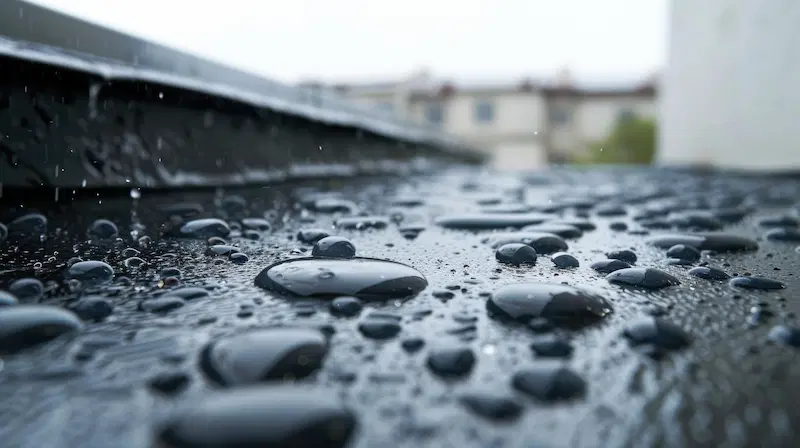
Here’s how they compare based on specific needs and features:
EPDM (Rubber Membrane)
Best for: Homeowners on a budget looking for durability and low maintenance
- Long lifespan (20–30 years)
- Flexible in extreme cold
- Easy and affordable to repair
TPO (Thermoplastic Polyolefin)
Best for: Energy-conscious buyers and modern eco-friendly homes
- White reflective surface reduces cooling costs
- Fully recyclable
- Good weather resistance
- Slightly more expensive and less proven long-term than EPDM
Elastomeric (Modified Bitumen / SBS)
Best for: Tough Canadian winters and buildings needing extra protection
- Extremely durable and puncture-resistant
- Performs well in freezing temperatures
- Dark surface needs good insulation to offset heat absorption
- Higher installation cost and not recyclable
There’s no single “best” membrane—only the best one for your home and needs.
- Choose EPDM for a budget-friendly, reliable roof that can handle harsh weather.
- Go with TPO if energy efficiency and sustainability are top priorities.
- Opt for Elastomeric if you want rugged performance and maximum durability in cold climates.
Whatever your choice, make sure it’s installed by a certified flat roofing professional to ensure long-term protection, performance, and peace of mind.
FAQs about Flat Roof Installation in Canada
Flat roofs are common across Canadian homes and buildings—but they come with their own set of questions, especially when it’s time for a replacement.
From lifespan and costs to winter performance and walkability, homeowners often want clear, practical answers before making a decision.
Below, we answer the most frequently asked questions to help you understand what to expect from flat roof installation in Canada.
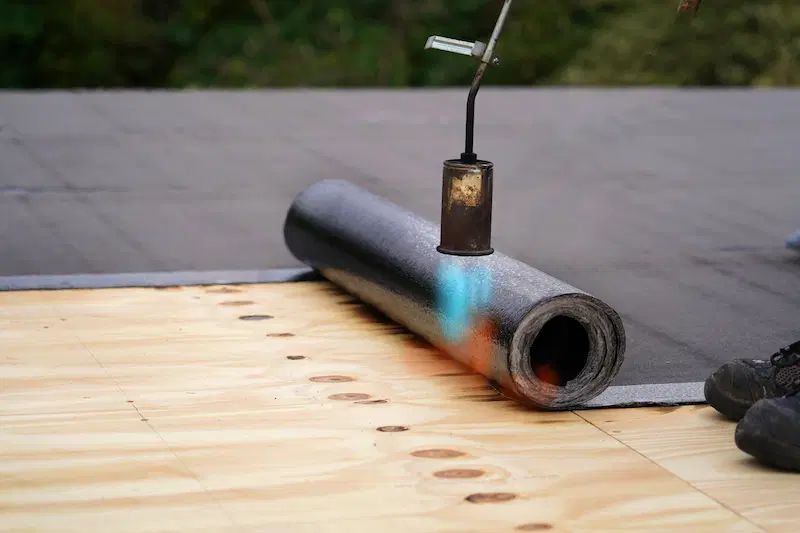
1. How long does a flat roof last in Canada?
With proper installation and regular maintenance:
Elastomeric (Modified Bitumen) roofs can last 25–30 years
EPDM rubber membranes last around 20–30 years
TPO membranes have a typical lifespan of 15–25 years
Harsh winters, UV exposure, and poor drainage can shorten this lifespan, so regular inspections are key.
2. Can I install a flat roof membrane in winter?
Technically, yes—but winter installations are more complicated.
- EPDM and TPO membranes require adhesives that may not cure properly in freezing temperatures.
- Torch-on elastomeric membranes can still be installed in winter by experienced crews, but snow and ice removal is critical.
Most contractors recommend waiting for spring to fall for optimal conditions.
3. What’s the best flat roof membrane for Canadian winters?
For cold-weather durability, Elastomeric (Modified Bitumen) and EPDM are the best performers.
They stay flexible in sub-zero temperatures and resist cracking and shrinkage. TPO can be suitable if a high-quality formulation is used and the installation is done professionally.
4. Do flat roofs always leak eventually?
While flat roofs are more prone to pooling and drainage issues, a properly installed and maintained membrane can remain watertight for decades. The key to leak prevention includes proper slope and drainage. Annual inspections are also necessary to catch early signs of potential problems.
5. Is a flat roof more expensive to replace than a sloped roof?
Flat roofs often have lower material costs, but labour can be more specialized and waterproofing and insulation could increase costs.
They usually cost $7–$15 per sq. ft., depending on membrane type, insulation, and location.
6. Do flat roofs increase or reduce home value?
A modern, well-maintained flat roof can enhance home value, especially in urban or contemporary builds. However, an old or poorly installed flat roof can deter buyers and reduce appraisal value.
Replacing a flat roof with the right membrane can recoup 60%–75% of the cost at resale.
7. How do I know if I need a new flat roof or just a repair?
These signs indicate you may need a full replacement:
- Multiple or recurring leaks
- Blisters, bubbles, or shrinkage in the membrane
- Interior water stains or mould
- The membrane is 20+ years old
A roofing inspection can confirm whether you can still repair the roof or it is time to get a new one.
Ready to Replace or Upgrade Your Flat Roof?
Choosing the right membrane is only the first step. Getting a quality installation from a trusted, experienced roofer is what makes the difference between a leak-free 30-year roof and a costly headache in 5 years.
Want expert help comparing quotes? We connect Canadian homeowners and property managers with licensed, insured, and vetted local contractors.
Get FREE roofing estimates from trusted professionals from our network. Just fill out the short online request form at NO COST and NO OBLIGATION.
No pressure. Just the information you need to find the best choice for your roofing needs.


